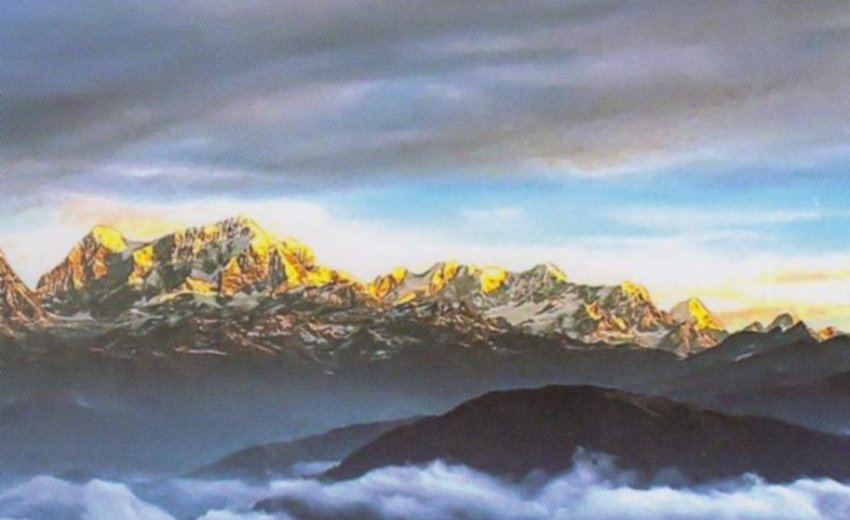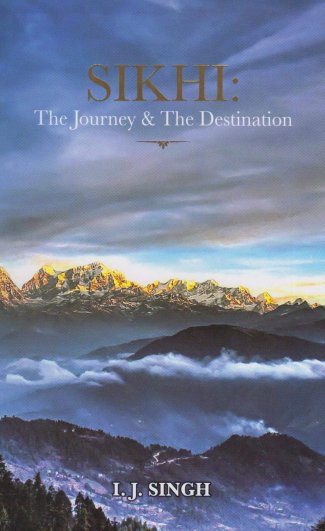The dictum that Sikhi, like life, is both the journey and the destination has been the central motif of I.J. Singh’s writings. Indeed, Sikhi has defined the ongoing dialectic of his immigrant experience. He arrived in the United States as a student in 1960 and was faced with issues of identity and assimilation – issues that are at the core of every immigrant experience. He was, by his own admission, ill-equipped: he was a Sikh by default, that is, a Sikh by birth and had known Sikhi only through osmosis in India. That began a lifelong journey of engaging with Sikhi, during which he discovered the “possessive power” and “alluring beauty” of Sikhi and embraced it with the enchantment that a child might feel in “discovering a new electronic game.”
What started out as a personal quest (and remains so) with an emphasis on doctrinal matters and issues of identity has evolved into a wider concern for the community and its place on the world stage. As his engagement with Sikhi has deepened, one can discern is more rooted in the framework of Sikh teachings and his concerns broader and societal. Not surprising. A Sikh does not climb the inner mountain alone but anchored in Sangat. Community matters become important, if not paramount.
Writing became the navigational tool of choice, a form of ‘self-indulgence,’ to measure his progress along this journey. For those who have followed his writings, one can discern the visible bias of an “ordinary Sikh,” evident in his first book, Sikhs and Sikhism: A View with a Bias (1994), give way to a sense of pilgrimage in second book, The Sikh Way: A Pilgrims Progress (2001). In the subsequent Being and Becoming a Sikh (2003), The World According to Sikhi (2006) and Sikhs Today: Ideas and Opinions (2012), one discerns that the pilgrimage, like all personal odysseys, is never ending, never linear and never to a specific location.
Not surprising, then, that he should choose to title his sixth collection of essays, Sikhi: The Journey & the Destination. In this book, he returns to familiar terrain – Sikhi in all its dimensions. That is the nature of spiritual journeys: one returns to the familiar only to see things anew and discern deeper shades of meaning. Writers are also possessed by a single great idea and Sikhi is “akath katha,” a story that can never be completed. And so, it is that I.J. Singh returns – over and again – to write about that which cannot be grasped.
Starting with Living in Punj-Lish/Eng-Jabi and concluding with “What Sikhism says about Gender, Sex & Related Issues” the 36 essays cut a wide swath across Sikh history, politics, culture, religion and practice.
The cheeky title of the opening essay, Living in Punj-Lish/Eng-Jabi belies the more serious issue of the decline of Punjabi, brought about, in large measure, by Sikhs themselves, who “openly reject Punjabi as the language of the unschooled, uneducated herd.” The neglect of Punjabi in favor of Hindi and English is driven by Sikh pragmatism and a desire for upward mobility but has left Sikhs with a transactional and shallow relationship with their mother language. This decline of Punjabi is an ominous sign and portends the eventual disappearance of a culture - a danger that Sikhs should wake up to.
In Guru Gobind Singh: The Man Non-Pareil he wonders aloud if Sikhs haven’t squandered the legacy of the Gurus. Guru Gobind Singh left us with defining markers of identity, a sense of self-empowerment, a scripture and the notion of collective leadership. I doubt that anyone would question I.J. Singh’s assertion that Sikhs have created a “mess of pottage.” There is no question that Sikh institutions are a mess; that we suffer from a lack of leadership; that we must find ways to carry forward the vision and mission of the Gurus.
The dangers posed by our indifference to Punjabi and squandering of the legacy of our Gurus is matched by the Indian State’s sustained vilification of the Sikhs through a “clear political strategy” that “branded Sikhs as anti-national.” This is a leaf out of Donald Trump’s “fake news,” where governmental and political machinery, abetted by a docile press can create “fake” news for political ends.
A cluster of essays address concerns that are perennial and universal: The purpose of life, the pursuit of happiness, the Ego (Haumae) and the meaning of Hukam.
In speaking of Haumae, I.J. Singh tells us, rightly, that the common understanding of the term as Ego in English is misleading and that it may be more appropriate to think of it as narcissism – a condition characterized by a “grandiose view of one’s own talents and a craving for admiration, as defining a personality type.” Haumae, according to this view, has “two powerful ideas inherent in it,” the ego as a sense of self and the ego “run amok.” It follows that uprooting and destroying Haumae - as is commonly understood - would be impossible without dying. Instead, we need to tame its tendency for narcissistic behavior. In short, a disciplined ego.
Whether this squares with the description of Haumae in Gurbani is left to the reader to decide.
A disciplined ego becomes the basis of a good and purposeful life. But to what end? In the essay, The Purpose of Life, it is argued that, if there is indeed a purpose to life, it should be self-evident and not require us to “lean” on religion to figure it out. But, ironically, the author does just that: lean on Sikhi to formulate his sense of what human purpose may be. The purpose, simply put, it is to be a Jeevan Mukt (liberated from the narcissistic demands of the ego) and live a productive, selfless life “attuned to a perspective that is bigger than the self.”
A purpose driven life, then, is a life lived in consonance with Hukam, which, along with Haumae, forms the foundation of Sikh teachings. Indeed, Hukam and Haumai are like two highly charged polar opposites that share a symbiotic relationship. In Hukam: What it Is and what it Ain’t Hukam (loosely translated as “order” or “edict”) requires that we live and rejoice in the Will of God even if it cannot be fully comprehended. What this means is that we come to terms with our inherent limitations as humans while continuing to live boldly and purposefully, exercising whatever free will we have.
In Chasing Happiness, a historical survey of the universally pursued but little understood thing we call happiness, is examined. Beginning with Aristotle’s prescription of “pleasure, honor and self-sufficiency,” the essay zig-zags through the views of sociologists, behavioral scientists and psychoanalysts and eventually settles on “moral joy, the glowing satisfaction we get when we have surrendered ourselves in some noble cause or unconditional love,” as being the ultimate yardstick for happiness. In Sikhi, this would equate to a life where Haumae lives in accord with Hukam. Happiness would be a natural concomitant.
Moving to broader community concerns, I.J. Singh offers a vision of the future in Sikh Misls: Yesterday, Today and Tomorrow. Drawing on the idea that the Sikh misls existed as a loose confederacy, he envisions a similar association that could link the global presence of the Sikhs into a nation without borders: “I can see Sikh misls – Singaporean, Kenyan, Thai, Punjabi, British, American or Canadian among others, cognizant of their own interests and convening in a Sarbat Khalsa in the larger interest of Sikhs worldwide.”
But I.J. Singh is also keenly aware that there are problems with calling a Sarbat Khalsa and issuing a Gurmata in the current political climate in India, “that would work against such a convention.” He rightly recognizes that the “mechanisms of convening the Sarbat Khalsa as a means of deriving a Gurmata were designed for a different world.” We must continue to find mechanisms that are appropriate for our times.
The lead in defining such a framework must come from scholars and intellectuals within the community. But in Reshaping Ivory Towers into Towers of Learning, he laments the “progressively widening gap” between the scholars who run Sikh Studies programs in North America and the Sikh community: Sikh scholars, who tend to write for each other in highly specialized journals, have not bridged the gap to become public intellectuals in the mold of Carl Sagan, Stephen Hawking, Noam Chomsky – individuals who were serious scholars and domain experts but with the knack to reach out to the average person. This is a call to our scholars to step out of their ivory towers.
Translating Gurbani: Pitfalls and Pleasures and The case for transliteration of Gurbani are related subjects whose importance cannot be overestimated. Given that Punjabi is no longer the common language amongst Sikhs in the diaspora, the need for further translations – and transliterations – of the Guru Granth Sahib are imperative. But most efforts in this sphere remain individual accomplishments.
It is difficult to write about Sikhi and not touch on reincarnation and transmigration – a subject that is tackled with some out-of-the-box thinking in Reincarnation/Transmigration: Re-visited & Re-explored. Ideas of reincarnation and transmigration, along with karma (which serves as the fuel for this system) are central to Indian thought but have been reduced to a literal accounting of one’s karma (lit. actions). I.J. argues (correctly) that Sikhi does not take such a transactional view of one’s action; instead, life is to be seen as a series of potentially transforming moments.
In Sikhi: Creationism, Evolution & Related Matters, the divide between science, especially Darwinian evolution and the Semitic religions is contrasted to Sikhi’s ability to coexist with scientific ideas; indeed, Guru Nanak’s cosmology is strikingly modern. Guru Arjan, the fifth Guru, speaks of the emergence of human consciousness in very evolutionary terms.
No discussion of the Sikhs can be complete without acknowledging the discussion and debate around Sikh identity – especially in relation to the external markers, of which unshorn hair (and the associated turban) is the most prominent and the most debated. In Turban of the Sikhs, a historical survey is undertaken, and the different arguments considered. The conclusion is one that this reviewer heartily endorses: “Whether or not we can produce a single document of unassailable authenticity… unshorn hair managed by a turban lie at the core of Sikh identity.” What is important is not documentary evidence but how Sikhs view themselves. A Khalsa is the archetype that sits deep in our collective consciousness.
I.J. Singh’s journey in Sikhi is inextricably linked with his passage as an immigrant. The immigrant experience is a curious admixture of loss and gain: a familiar environment and identity recedes and gives way to a new and unfamiliar one. The adjustment to a new one is a complex process that reshapes identity in fundamental ways. In I.J. Singh’s case, we see the process played out in the backdrop of Sikhi.
In Sikh Americans: A Lament …or Delight, we get a feel for the distance that the author has travelled. From being a “lone Sikh” in parts unknown 60 years ago, trying to sync his Sikh identity with his “American Dream” we see the emergence of an assertive American-Sikh demanding a place at the table and seeking to “define a place for Sikhs and Sikhism within the framework of contemporary American society.” That is a quantum leap!
The value of this book, and I.J. Singh’s writings in general, is that it challenges us to think – and rethink - our often rigid and impenetrable positions. He has a knack of framing questions in a meaningful and challenging way. He instructs without being preachy and without laying claims to infallible truth – a refreshing change from the usual scolding tone of Sikh writers. The book - like his previous ones - is a kind of spiritual or philosophical sing-along for those who are also engaged in their own spiritual quest and are ready to ask uncomfortable questions and explore uncharted territory.

